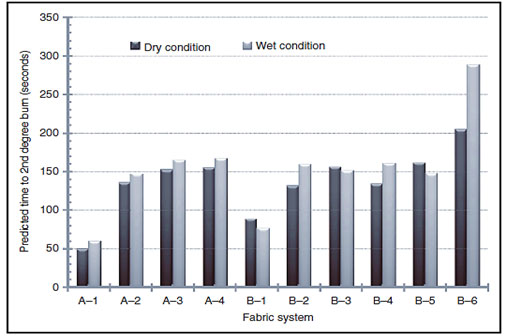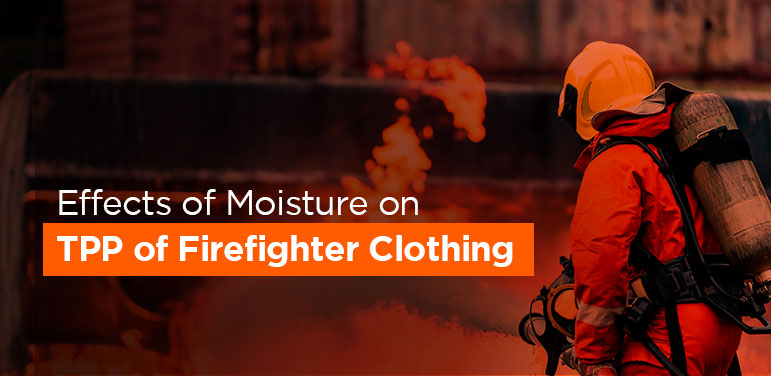Firefighter clothing stands as a crucial line of defense against the intense heat and flames encountered on the front lines. However, the efficacy of thermal protection performance (TPP) in these garments is not immune to the influence of moisture, whether it be from sweat, rain, water spray, or steam. While it is well-established that wet fabric tends to have higher thermal conductivity, leading to diminished TPP against conductive heat exposure, the interplay of moisture with radiant heat protection presents a more intricate puzzle.
Conductive Heat Exposure:
The presence of moisture in firefighter clothing is a double-edged sword when it comes to conductive heat exposure. On one hand, moisture enhances the thermal conductivity of fabric, thereby reducing TPP against conductive heat. On the other hand, the increased heat capacity provided by moisture can serve as a buffer, delaying the temperature rise on the firefighter’s skin. However, this buffering effect may also extend the cooling process once the individual exits a hazardous area.
Radiant Heat Exposure:
Understanding the impact of moisture on radiant heat protection is a nuanced endeavor. A seminal study by Lee et al. in 1986 shed light on this complexity. Their research indicated an improvement in TPP at lower radiant heat exposures but a reduction at higher intensities. Subsequent studies have yielded mixed results, with some demonstrating positive correlations between moisture and TPP, while others showcase negative associations.
Moisture’s Influence on Radiant Energy Exposure:
The intricate relationship between moisture and thermal protection under radiant energy exposure hinges on various factors. The amount of moisture, its distribution among layers (particularly in multi-layered systems), clothing design, and radiant energy levels all play crucial roles. There is no universal conclusion regarding the effect of water on thermal protection, underscoring the multifaceted nature of this interaction.
Research Studies:
A notable study by Barker et al. in 2006 (see Fig. 1) delved into the effects of moisture on predicted second-degree burn injury for firefighter turnout systems exposed to sub-flashover heat flux. Intriguingly, they found that a small amount of moisture (up to 15% of the garment weight) hurt TPP, while higher moisture levels increased the heat protection provided by the garment.
Another study conducted by Song et al. in 2011 (see Fig. 2) provided contrasting results. This research explored the effect of moisture on thermal protection in protective garment systems with different thicknesses exposed to low-level radiant heat flux. The findings suggested that the presence of water (ranging from 15 to 70% by weight) significantly increased TPP for a majority of the assessed garment systems.


In conclusion, the relationship between moisture and thermal protection in firefighter clothing is complex and multifaceted. The impact of moisture on TPP depends on numerous factors, and no universal conclusion can be drawn regarding its effect on radiant heat exposure. When assessing the interplay between moisture and thermal protection, it is essential to consider the specific conditions, garment design, and radiant energy levels. These complexities emphasize the need for caution in concluding, especially when translating laboratory findings into real-world firefighting scenarios.


Leave a Reply